CRIME
Killer Next Door
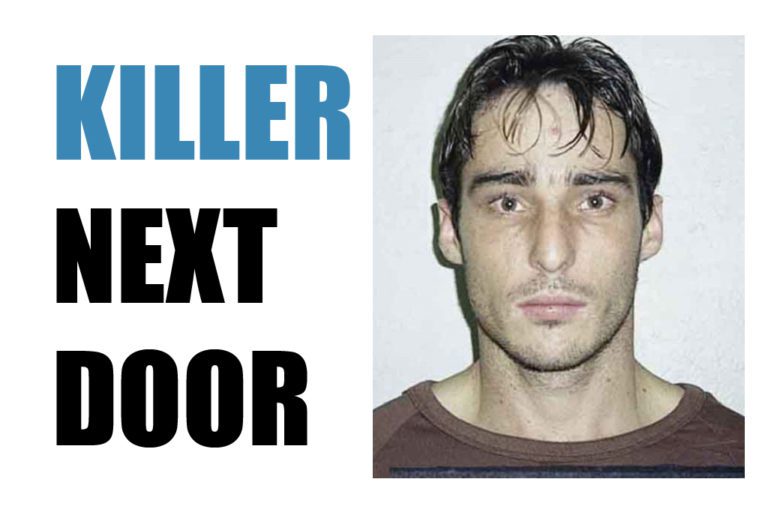
WORDS: Denise Cullen PHOTOGRAPHY Supplied - Australian Police Journal
An Ipswich (Queensland) missing person’s report turned murder investigation proves a little forensic knowledge can be a dangerous thing.
JUNE 1999
Twilight was turning to darkness when 17-year-old Nicole* stepped off the bus and started walking towards her home in Brisbane. It was the same route she took every day. She didn’t notice the stranger watching her—hadn’t seen him on the other days either—so she was blindsided when she felt his hot breath on her neck as he seized her and forced her into the boot of his car. He drove and drove. She gathered her wits. Fought back. Screamed. Kicked out the tail light of his car. Then he stopped, opened the boot, said something – she doesn’t recall what. She noticed a thick roll of packaging tape in his hand.
“Are you going to tie me up with that?” she said. “Please don’t.”
There was something about her manner which softened his resolve. He invited her to sit in the front seat, placing the packaging tape on the seat between them. He started to drive again. Nicole spotted a knife in the centre console.
“Are you going to kill me?”
“Nope.”
He grabbed the knife and threw it out of the car window. “I’m not gonna kill you.”
But he indicated, in crude terms, that he still intended to tie her up and rape her. Nicole cast about for a means of escape. A diversion. She offered the man some cannabis. The gesture seemed to calm him down. After driving still further, he released her, without causing her further harm. When police located her abductor, he pleaded guilty to a charge of having assaulted Nicole with intent to rape her—having detained her against her will with intent to carnally know her. He was sentenced to five years’ imprisonment. Though prison authorities opposed his early release to parole in 2002, he was back out in in the community in less than three years.
31 AUGUST 2004
It wasn’t like Nina Lewis not to show up for work. Unable to reach her by phone that Tuesday, Nina’s boss at the Goodna Cash Converters and two workmates went around to her home in the Ipswich suburb of Leichhardt. There, they found her car missing, her front door unlocked, and the house in disarray. Telephone logs show that Nina’s concerned colleagues called police at 2.48 pm.

Missing Person’s Notice
The officers who came to take the missing person’s report shared Nina’s colleagues’ sense of dread. Toilet rolls, an opened packet of washing powder and a doona had been used to block up the overflowing spa bath. Hot water flooded the house. Condensation clung to the ceiling. Undissolved laundry powder was scattered on the tiled and wooden floors. The double bed had been stripped of linen, and pillows and cushions haphazardly piled atop the mattress. Though the house had been ransacked, Lewis’s mobile phone, wallet and handbag, sat untouched on the kitchen table. Responding officers noted cash lying on the floor, in plain sight. Whatever this bizarre scene was about, it wasn’t money.
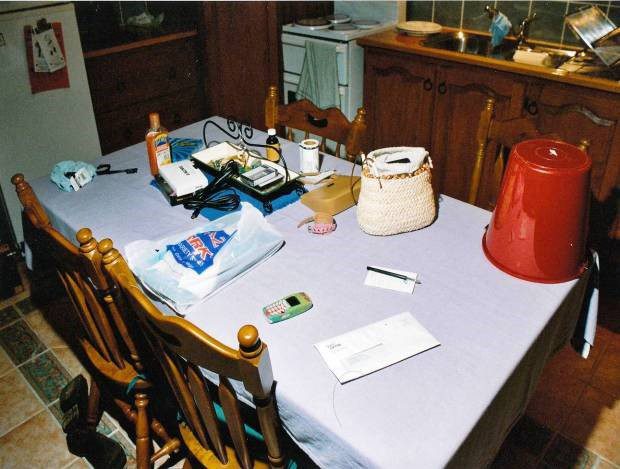
Found on Nina’s kitchen table was her handbag, wallet and mobile phone
But something of a story was starting to take shape. The scattered laundry powder and flooded floors suggested that whoever had done this had desperately wanted to wash away the physical evidence. This, in turn, revealed an understanding of the importance of forensic evidence to police investigations. Worldwide, investigators report that crime scenes increasingly bear the tell-tale marks of their architects’ forensic awareness. Gloves are worn to avoid leaving fingerprints. DNA-destroying bleach is used to clean up blood. Bodies are dumped to delay their discovery. Television crime dramas are sometimes blamed for increasing levels of forensic awareness – the so-called ‘CSI effect’. Some have even called for shows such as Waking the Dead and Silent Witness to stop giving the secrets of forensic science away. However, another explanation is that the forensically aware offender has had previous brushes with the law. The British criminal profiler David Canter claimed that offenders who are able to hide their tracks have probably been in the criminal justice system before. They’ve had the opportunity to learn from their past mistakes.
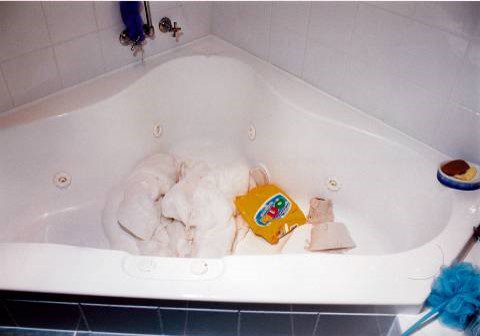
A doona and other items were used to plug Nina’s bathtub
Just over an hour after the first call to police was made, searchers located Nina’s missing silver Toyota RAV4 in bushland at Wulkuraka, behind a Steggles factory, about a kilometre from her home. The inside of the vehicle had been stuffed with hay and pillowcases and towels from Nina’s house. It also contained a pair of men’s running shoes, and number plates which had been ripped off the vehicle, folded up and stuffed under the front seat. Scorch marks suggested that whoever had assembled this bizarre tableau had then started a fire, presumably in an attempt to send the car and its contents up in smoke. But the person responsible had then rolled up the car’s windows and shut the doors, starving the fire of oxygen. Instead of destroying evidence, the would-be arsonist had unintentionally preserved it.
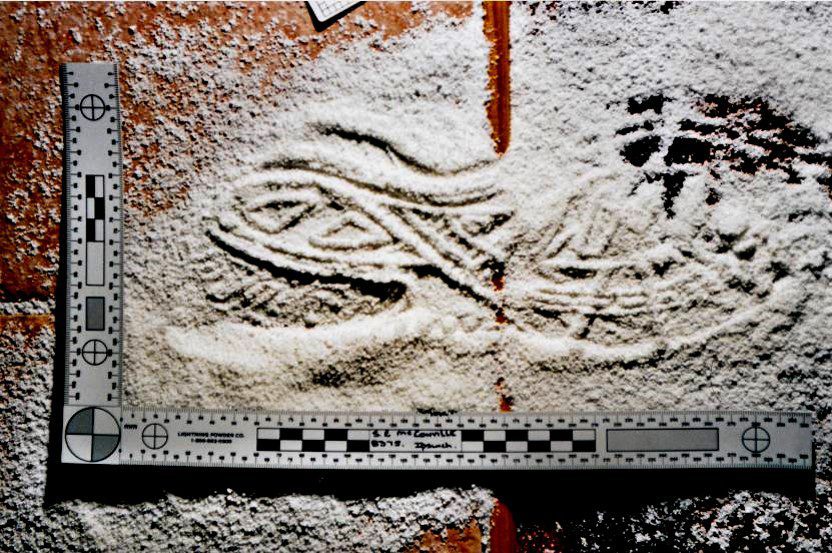
Footprint in washing powder
Detective Senior Sergeant Tom Armitt, now working within the Fortitude Valley Criminal Investigation Branch (CIB), has been involved in more than 60 murder investigations, many of them high profile, including the murder of Dulcie Birt (1) and Eunji Ban (2). But, at that time, he was a plainclothes constable with Ipswich CIB. He’d already worked from 8 am to 4 pm but received a call from his boss at around 7.30 pm. “He told me to come back to work immediately, as there was a missing person’s job, and he had a strong sense that it might be a murder,” Armitt said.
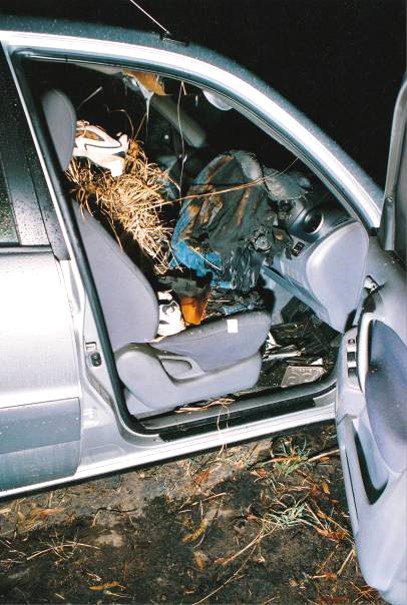
Attempts had been made to burn Nina’s vehicle
A major incident room was established. Police conducted neighbourhood doorknocks, scoured bushland, took statements, and made media appeals. Nina’s house and the site of her abandoned car were cordoned off as crime scenes to allow scientific examiners to do their work. Bank and telephone records were seized. One of Armitt’s first tasks was to take statements from Nina’s friends, family members, neighbours and colleagues, in order to complete a thorough victimology. “We were looking for any angle to start working on why she went missing, and we needed to know her habits, her friends and associates; anything to get us started,” Armitt said.
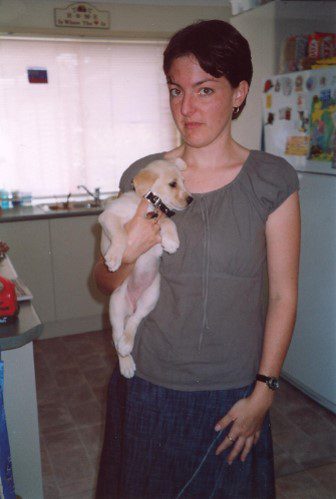
Victim – Nina Lewis
Piece by piece, a fuller picture of the missing Nina Lewis came into focus. A long-term relationship had broken down six months earlier and, in its wake, Nina had become depressed. However, she had since emerged from the gloom and was getting rid of the reminders of that relationship. On the Sunday, she’d gifted her ex-partner’s gym set to a colleague, in whom she had some romantic interest. After loading the equipment into his car, the pair had shared a beer, and then a kiss. On the Monday, she’d gone into Goodna Cash Converters on her day off. She borrowed a large ball-peen hammer, so she could knock down the bolts in the concrete floor of her garage. The bolts had previously been used to secure the gym set but were now a trip hazard. Nina and her boss had lunch before she headed home at about 2.30 pm – her last known sighting. She rang her mother at about 6.00 pm that night – her last known conversation.
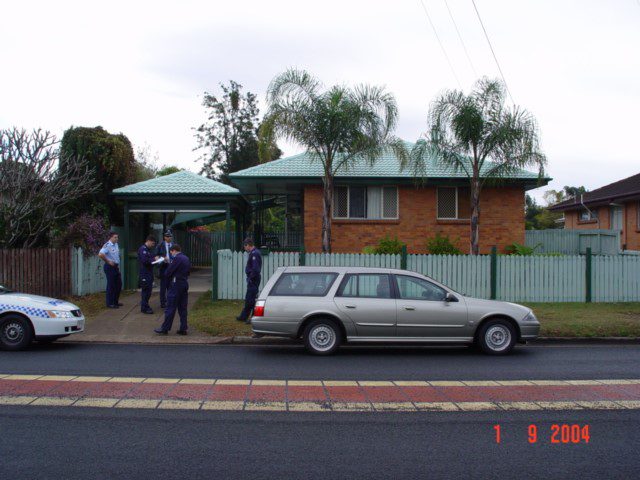
Nina’s house at 79 Aspinall Street
Searches of Nina’s house, car and their respective surrounds continued. The ball-peen hammer was nowhere to be found, nor was there any blood evidence or fingerprints. But a distinctive shoeprint was located in the pile of undissolved washing powder on the kitchen floor. The tread and wear patterns were a perfect match for the shoes found in Nina’s car, meaning the person who’d dumped and then tried to incinerate them had stomped his way through her house. For investigators, this isolated clue was a stroke of luck. Yet so many unknowns remained. How had this shadowy figure been able to access Nina’s house without causing any damage? Was he known to her? Why had he driven her car back towards her house? Did he live nearby?
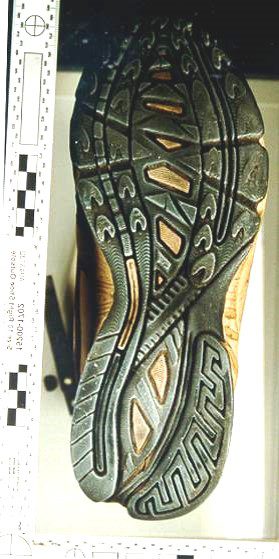
The shoes in the vehicle were the same as those that made the print in the house
Police resources were stretched to their limit because of two other major murder investigations taking place at the same time. Bravo-Settler, the investigation into the triple murder of Neelma, Kunal and Sidhi Singh in April 2003, would continue for another five-and-a-half years before Neelma’s ex-boyfriend Massimo “Max” Sica was charged (3). In eerie parallels to the Lewis case, the Singh siblings were found dead in an overflowing hot spa at their parents’ home, and the killer had used bleach and other materials to clean the murder scene but left behind a sock print. Bravo-Vista, instituted following the disappearance of Daniel Morcombe from a bus stop on the Sunshine Coast just before Christmas in 2003, was also consuming significant amounts of investigators’ time and attention. It would be another eight years before Brett Cowan was charged with the teenager’s murder (4).
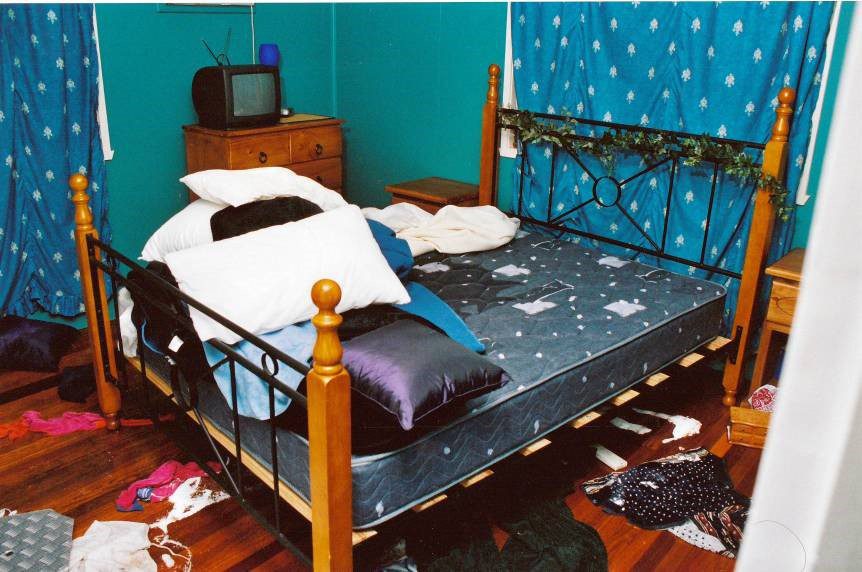
Linen was stripped from Nina’s bed, and her room left in disarray
As a result of police doorknocks, and the distribution of fliers, many residents reported seeing Nina’s car on the evening of her disappearance. The timing of these sightings differed, but most mentioned a dark-haired man, driving aimlessly around the neighbourhood and nearby streets. One witness, who was out with his children while walking the dog after dusk, provided chilling additional details. The witness thought he’d noticed a girl in the car, and “It looked like she was sleeping”. He sat down with a police artist to complete a computer-generated image (COMFIT) which turned out to be an eerily accurate representation of the man who would ultimately be apprehended. Searches had also identified a new crime scene – a small patch of bushland which yielded a roll of grey duct tape, and a small ‘RAV4 camel’ soft toy. The latter was one of a range of branded accessories released by Toyota Australia in time for Christmas 2003. Witnesses who knew Nina well confirmed it to have come from Nina’s car. However, what happened to her at this lonely spot remained unknown.
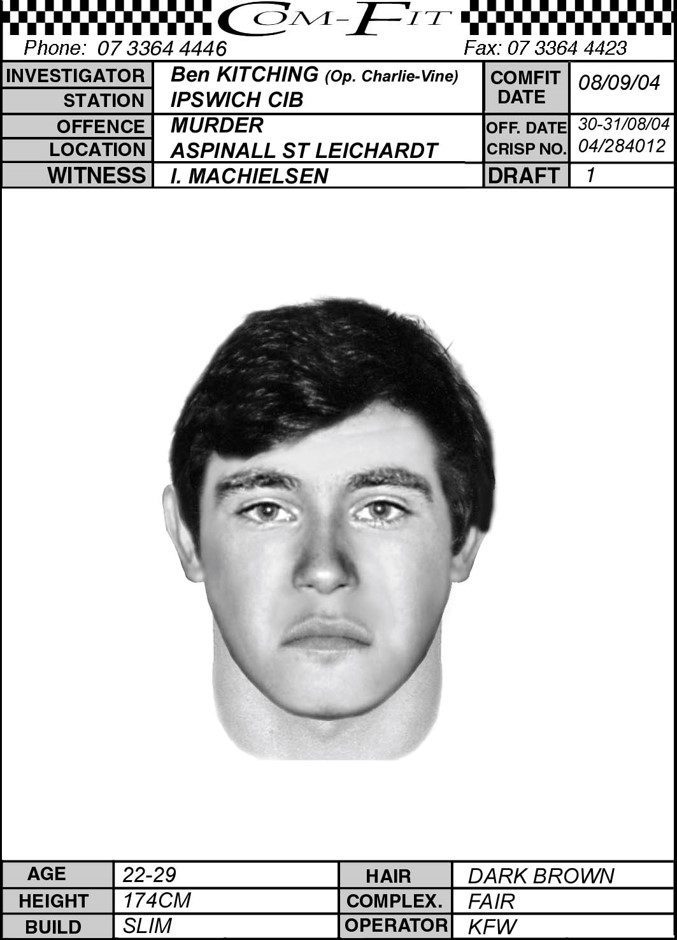
Comfit image of offender
4 SEPTEMBER 2004
On Saturday afternoon, a kayaker navigating a bend in the Brisbane River near Ipswich came upon a woman’s body in the water. The lower half of her body was unclothed, she’d been blindfolded and gagged, and her wrists and ankles were trussed with grey and black duct tape. The grisly discovery was made several kilometres downstream from the Kholo Creek Bridge, near to where the body of Allison Baden-Clay would be found, by another kayaker, eight years later (5). Police efforts were now officially a murder investigation, code-named Operation Charlie-Vine. The body was transported to the John Tonge Centre at Oxley for forensic analysis. Meanwhile, police divers and SES volunteers combed the river and its banks for days in search of further evidence. By the investigation’s end, dozens of people would have been interviewed and hundreds of pieces of information examined by a team of 20 detectives.
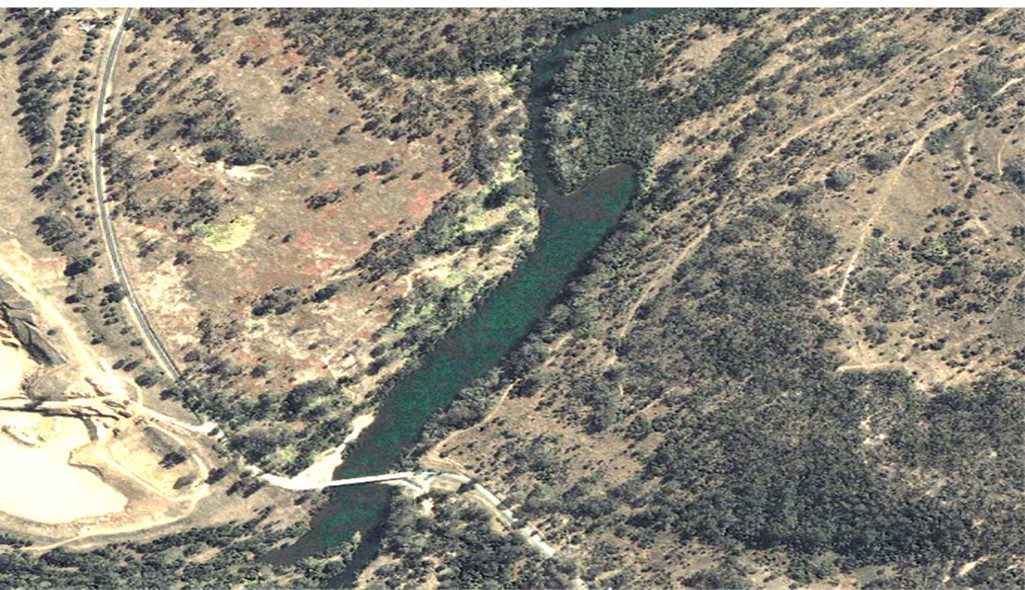
Nina’s body was located in a river bend towards the top of this image
Nina was identified from dental records. The autopsy revealed that, with no water in her lungs, and large skull fractures, she had not drowned. Rather, Nina had died from massive head injuries. She was believed to have been bludgeoned to death with the missing ball-peen hammer, subsequently located by police divers in the water just off the river bank. Sergeant Andrew Rowan from the Queensland Police Service’s scientific section also recovered other items – towels from Nina’s house, and the pants she was wearing on the day of her disappearance. These pants also had duct tape attached to them. “(Rowan) did the tape mechanical fitting and the removal of the tape from Nina’s body and was instrumental in the preserving of the vital evidence,” Armitt said. “He was able to confirm that the section of tape that was attached to the pants fitted in a sequence of application to her body – the black tape first, followed by the silver.” Police hypothesised that Nina’s killer had violently “blitzed” her in a surprise attack as she answered her door. After disabling her, the perpetrator had fashioned a sling from her doona cover in order to move her to the car. She was kept captive for several hours before being killed.
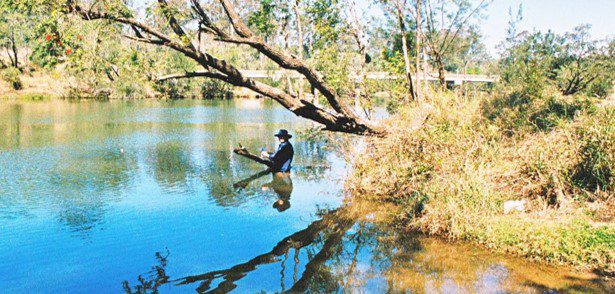
Searches underway in the Brisbane River at Kholo
Suspicion was beginning to settle on Nina’s neighbour, Paul Anthony Vaughan. Aged 28 years, Vaughan lived next door with his wife and four children. He’d already spoken to police and provided an innocuous statement in the early days of the investigation. On the Sunday, he said, he’d seen a ute parked in Nina’s driveway; she’d been sitting in the back of it talking to a man in his late 20s, black hair, thin build. On the Monday morning, he saw Nina vacuuming her car in the carport. The vehicle was still parked there late that afternoon. “On Tuesday morning, I took the kids to school but did not see Nina’s car in the carport,” he said in his two-page witness statement dated 31 August 2004 (the day Nina was reported missing). “This is not unusual as she normally works and leaves early.”
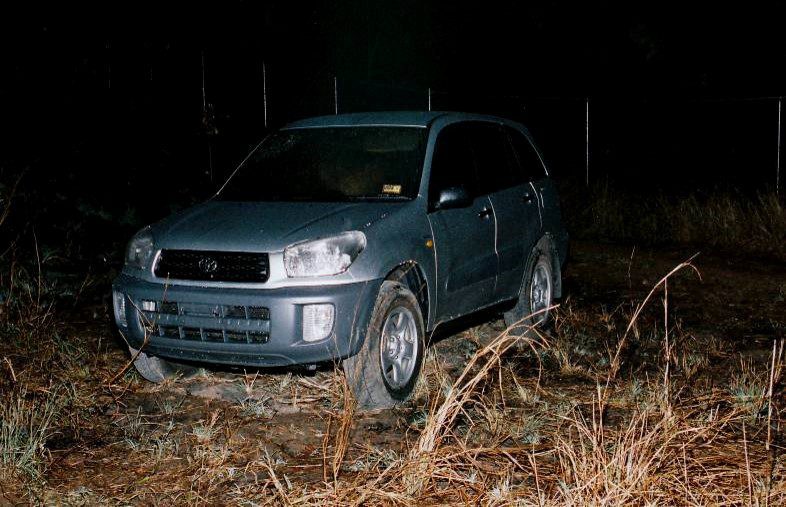
Nina’s abandoned vehicle
However, police knew that Vaughan was still on parole for the June 1999 abduction of a teenage girl who had managed to talk him out of raping her with the promise of cannabis. At the time of Nina’s disappearance, Vaughan was five months’ shy of his full-time release date. When police went back to see him the day after his initial statement, he tried to pretend it had slipped his mind. “There is one thing I forgot to tell youse blokes last night. That, um, I’m on parole, and I did – I did two-and-a-half years’ gaol as well.” Police asked for further details. “For something similar – a similar offence, but it was attempted rape [indistinct]. I’m still on parole for it and stuff … I got a five-year sentence [indistinct]. Apparently, I was supposed to have chucked her in the boot of – boot of my car and that, and drive her out and was going to rape her and that, but then I took her home. And then they got me for [deprivation] of liberty and attempt to rape.”
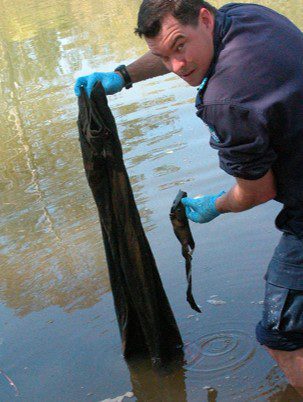
Towels from Nina’s house were found just off the riverbank
Vaughan was asked to return to the police station where he provided another statement to police. This time he also accounted for his movements in the days prior to, during and after Nina’s disappearance. “He told police that he had been ill the night she disappeared and had gone to the hospital for treatment and later returned home and watched a movie,” Armitt said. “We got enough details so that we could follow up and see if we could verify his version or not. This proved to be very important during our subsequent investigations.”
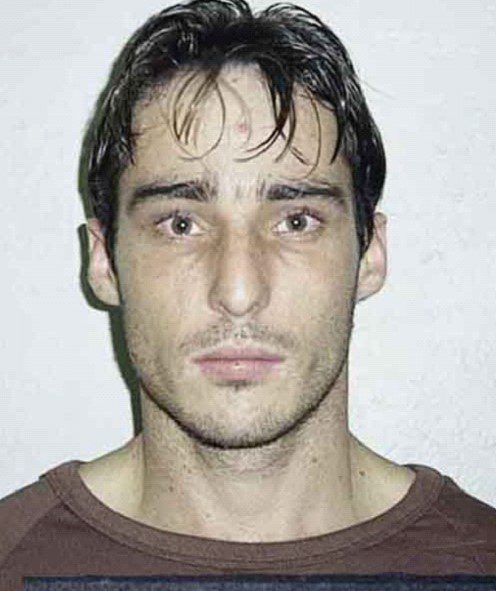
Mugshot of offender – Paul Anthony Vaughan
Police kept a very close eye on Vaughan after that. Aware that he was under surveillance, Vaughan became increasingly rattled and attempted to shift blame towards an associate dubbed “Fat Cat”, telling anyone who’d listen that this man was good for Nina’s rape and murder. “He’s the one that carried hammers around and knives, not me,” he protested. He told his parole officer that “the cops are trying to get me for this”. Each successive version of Vaughan’s story became more elaborate, and his behaviour more erratic. He and his wife spent hours driving around town to avoid the active crime scene next door. Vaughan would stop his car at traffic lights, then abruptly decamp, in an attempt to evade police. The cracks were starting to show, but there was still no physical evidence linking him to the crime.
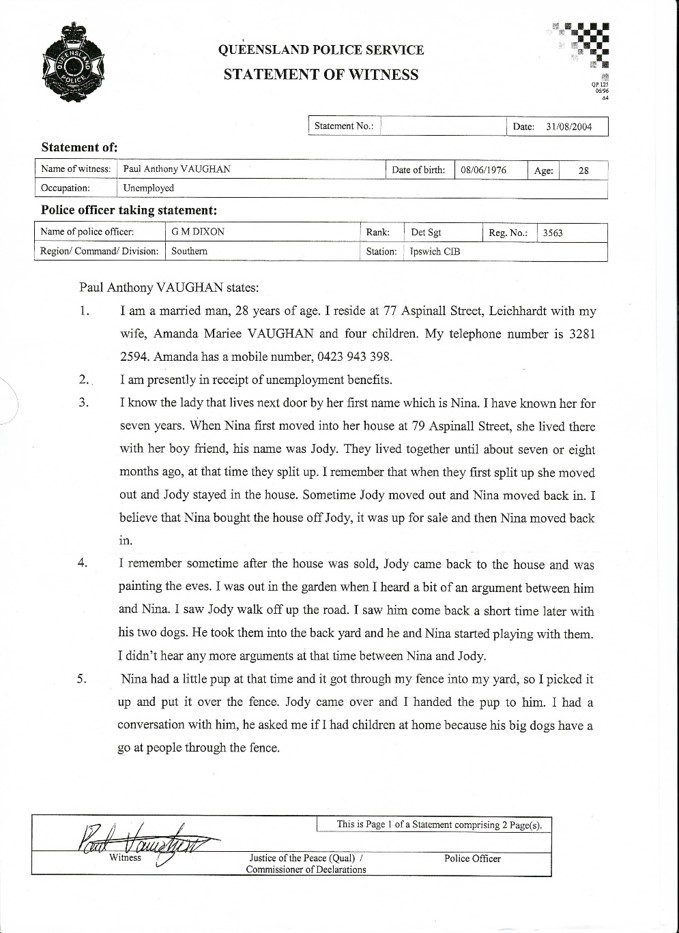
Vaughan QPS statement page 1
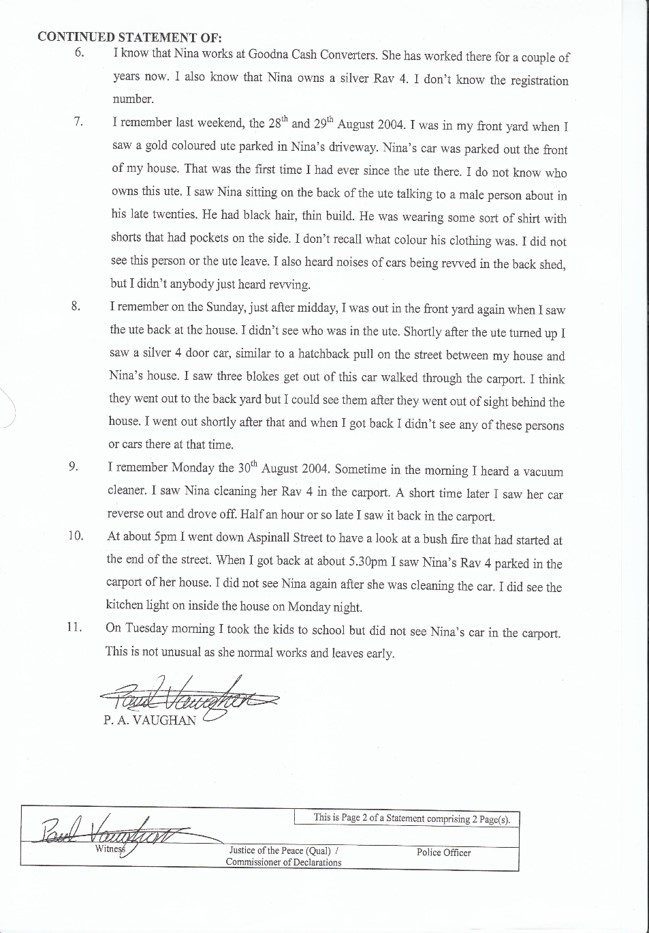
Vaughan QPS statement page 2
Back in the laboratory, Sergeants Paul Francis and Paul Peacock went to work on the grey duct tape which had been wrapped around Nina’s ankles. In a world-first method using liquid nitrogen, they set about snap freezing the tape to neutralise its stickiness and separate its layers. They then examined both the sticky and shiny sides of the tape and found a single fingerprint among the layers. However, when they ran the print through the database, there was no match. Frustrated, the fingerprint experts reassessed. Perhaps the print had been lifted from the sticky side but had actually been transferred there from the shiny side – a mirror image. When they flipped the image and ran it through the database a second time, a hit came back immediately. Paul Anthony Vaughan.
It was the break police had been waiting for. Yet Armitt remained cautious. Could the print have been laid down on the tape any other way than by the owner applying the tape to the victim’s ankles? Fingerprint experts confirmed that the print was embedded on the tape well within the sequence of its application. There was no other possible explanation for its existence other than Vaughan applying the tape to Nina’s body himself.
That was the moment Armitt realised, “We’ve got him.” The level of excitement was palpable, and there were a few quiet high fives as people began to prepare for the next phase of the investigation – locating and arresting Vaughan in connection with Nina’s murder. It was Armitt’s job to conduct the interview. It was also the first homicide arrest of his career.
“The importance of the situation was not lost on me,” he explains. “It was very daunting but also humbling.” Though he was surrounded by a solid team, the pressure not to misstep was immense. “My boss reminded me not to blow it up in my mind too much,” Armitt says. “He urged me to see (the case) as an assault in which a person died and to follow lines of inquiry and questioning as I would in any other investigation so that I could keep my head in the job and not get overawed and miss things, or let the situation get to me.”
13 NOVEMBER 2006
Finally, having lost his legal fight to exclude his interviews and partial admissions, Vaughan crumpled under the weight of evidence and pleaded guilty to the murder of Nina Lewis. He admitted in his plea that everything he’d claimed that Fat Cat did, he’d done. Vaughan received a life sentence. During sentencing, Justice Margaret White described the murder of Nina Lewis as an “appalling” crime. “Her family are utterly devastated at what you did to her,” she said. Under Queensland legislation, Vaughan will be eligible to apply for parole after serving 15 years of his murder sentence. At the time of writing, he remains in prison.

Author – Denise Cullen
ABOUT THE AUTHOR
Denise Cullen is a Brisbane-based psychologist, forensic registrar and journalist who writes on crime, psychology and law. Read more of her work at www.denisecullen.com.au Twitter: @CullenDenise
Ocean Road Magazine is proud to partner with the Australian Police Journal to provide a series of crime stories. You can learn more about the APJ online at www.apjl.com.au
An asterisk * in this story denotes the use of a pseudonym









